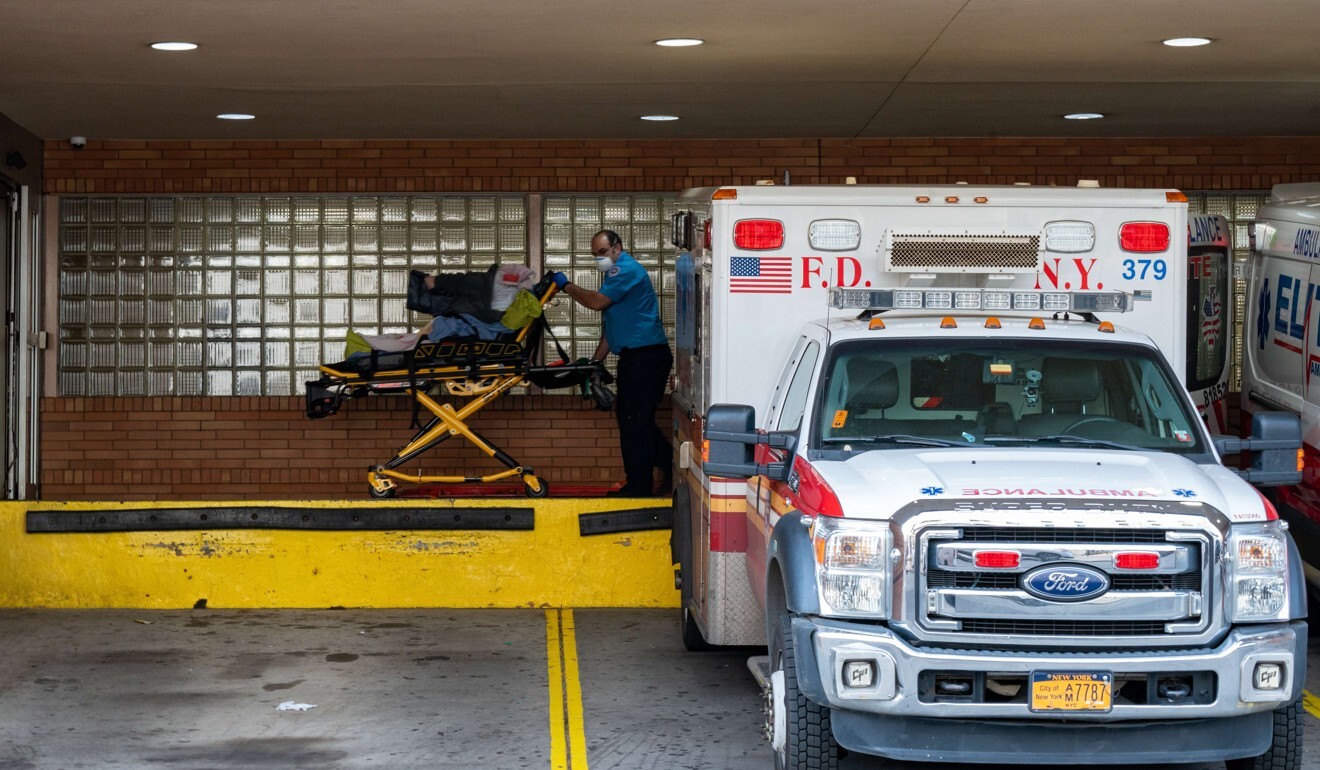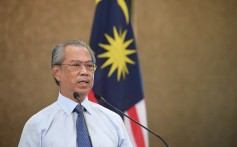Poor leadership, weak institutions and public mistrust have exposed the fragility of countries which have embraced democratic reform
As the going gets tough, some are falling back on militaries that still command extensive networks of power and influence
Asian Angle by Michael Vatikiotis Published: 4 Apr, 2020

Philippine President Rodrigo Duterte visits a military checkpoint during the coronavirus lockdown. Photo: Presidential Security Group
As governments in Southeast Asia struggle to contain the spread of Covid-19, poor leadership, weak institutions and high levels of public mistrust have exposed the fragility of countries that made a transition to more democratic government over the past two decades. The worry is that coping with Covid-19 will mean a return to authoritarian habits, backed by military power.
Two trends are discernible. The first is the tendency in those countries that have experienced either direct military rule, or periodic military intervention, to fall back on the military to lead or bolster management of the health crisis.
The second is that post-transition governments that allowed some measure of decentralisation but which retained extensive centralised power, are seeing an erosion of control as communities introduce their own preventive and protective measures. This may tempt governments to pull in the reins and roll back decentralisation.

Indonesian President Joko Widodo. Photo: Reuters
Indonesia illustrates both trends amply. President Joko “Jokowi” Widodo dithered and delayed a firm response to the spread of Covid-19, following advice he was given by his inner circle of the dangers of social unrest if restrictions on movement were too stringent. Initially, the president relied on cabinet members such as health minister Terawan Agus Putranto, who made a mess of messaging at a critical moment.
Then in mid-March, the president pivoted and appointed someone else to lead the government’s task force. Lieutenant General Doni Monardo was already head of the country’s national disaster agency. On March 13, the former special forces general was appointed chief of the Covid-19 task force. Since then, local media reports say, he has not left his office: a black couch is marked up with yellow tape to remind people to keep a safe distance when they visit him.
The two-star general has close ties to other members of the president’s inner circle, who have military backgrounds, observers say. The Jakarta military commander, Major General Eko Margiyono, was also appointed to lead the team in the capital, which has been badly hit by infections, killing more than a dozen doctors.

A joint police and military patrol enforces coronavirus measures in Indonesia. Photo: EPA
Even before re-election last year, Jokowi showed an inclination to rely on the military to make up for weak, often factional civilian bureaucracy, and also because many of the country’s problems are beyond his own experience and ability. Often this has made sense because the Indonesian military is a large, relatively cohesive organisation that can draw on an extensive network across the country because of a strategy of internal security that in the past ensured that soldiers were posted in every village. As The Jakarta Post commented in mid-March: “Having clung to power or revolved around it for most of the nation’s history, former military figures are able to tap into the ample resources of a well-established network of influence.”
The Indonesian military’s reach down to the local level may help protect the integrity of the central government. Many governors, mayors and local heads of communities have started imposing their own lockdowns to prevent the spread of the virus, challenging central authority. Asked about this recently, Doni Monardo said the deputies of provincial governors were the regional military commanders – implying a more effective and assertive chain of command.
How the coronavirus may change the geopolitics of Southeast Asia
23 Mar 2020

There is no question that even in countries where civilian primacy has been long established, governments have turned to the military to accelerate the implementation of Covid-19 countermeasures, although this has dredged up memories of military intervention at the political level.
In the Philippines, the lockdown of Manila and other areas of Luzon was quickly enforced by the military and police. Philippines army chief Lieutenant General Gilbert I. Gapay posted on social media that “as the country’s fight against Covid-19 is expected to impair some of our government services, the Philippine Army is projected to perform functions beyond its major roles”.
That’s all very well, but some reports from areas where the Armed Forces of the Philippines already operate in a counter-insurgency role say that overzealous commanders have operated checkpoints more stringently, which has become a source of tension.
Some have commented that the current situation is a de facto state of martial law, but the president’s office has stated multiple times that the quarantine is not, nor is it leading to, martial law. Still, people were not comforted when President Rodrigo Duterte later said he had “given a go signal” to the military and the police to shoot people violating the lockdown orders.

A soldier disinfects Silom Road as a coronavirus measure in Bangkok, Thailand. Photo: Xinhua
Thailand has experienced nothing but military rule since a coup in 2014. An election last year partially restored a parliamentary system of government, but the former army chief who launched the 2014 coup, General Prayuth Chan-ocha, has remained as prime minister. His handling of the Covid-19 crisis so far has been heavily criticised for being too little, too late.
Initially it seemed the experts would fill the policy vacuum as groups of doctors connected with civil society pressured the government to roll out measures to tackle the crisis. But as the number of cases went up and local administrators and strongmen in the provinces began to put their own restrictions in place, the army stepped in. Prayuth has now declared a state of emergency and a panel set up to oversee the crisis reportedly does not include medical experts and is mostly composed of senior military officers.

Members of the Myanmar Red Cross disinfect a street as a preventive measure against the coronavirus in Yangon. Photo: AFP
It’s the same in Myanmar, where the civilian-led government of Aung San Suu Kyi has been struggling to contain the powerful military since elections in 2015. When the government finally woke up to the threat of Covid-19 at the end of March, the response was to form an emergency task force comprised mostly of military and one civilian-led ministry – social welfare. This has mostly had the effect of stricter controls over media – with hundreds of websites shut down – and barring humanitarian access to conflict-wracked Rakhine State on the grounds that ongoing military operations are a priority.
In many countries around the world, fears of social unrest and the lack of trust in government authority are resulting in a resort to tougher law enforcement. But the integrity of political reform has always been weak and prone to setbacks in Southeast Asia, particularly in countries where the military has a long history of political intervention, such as Indonesia, Myanmar and Thailand. Notions of civilian primacy are weak, and, with a paucity of external threats, the army sees itself as the guardian of internal national security, especially in times of crisis. The aftermath of the Covid-19 crisis could therefore see a weakening of boundaries that had begun to strengthen between military and civilian power.
Michael Vatikiotis is the author of Blood and Silk, Power and Conflict in Modern Southeast Asia





































